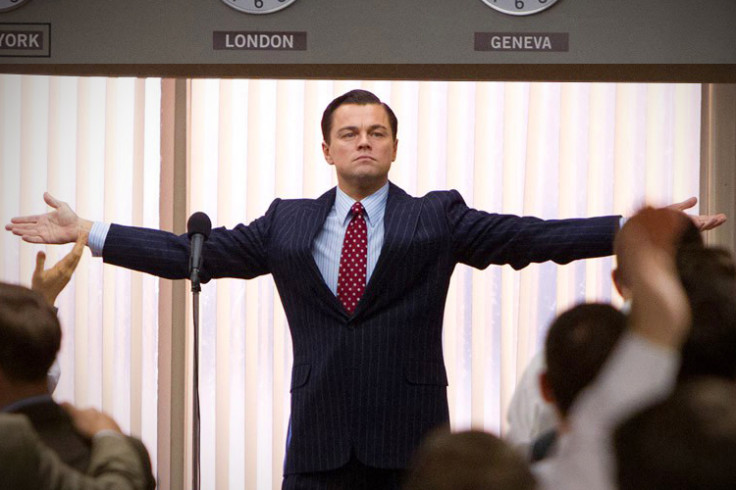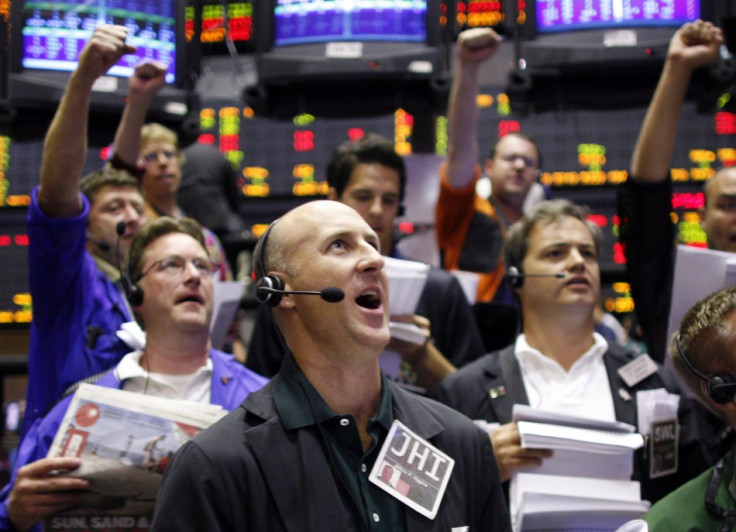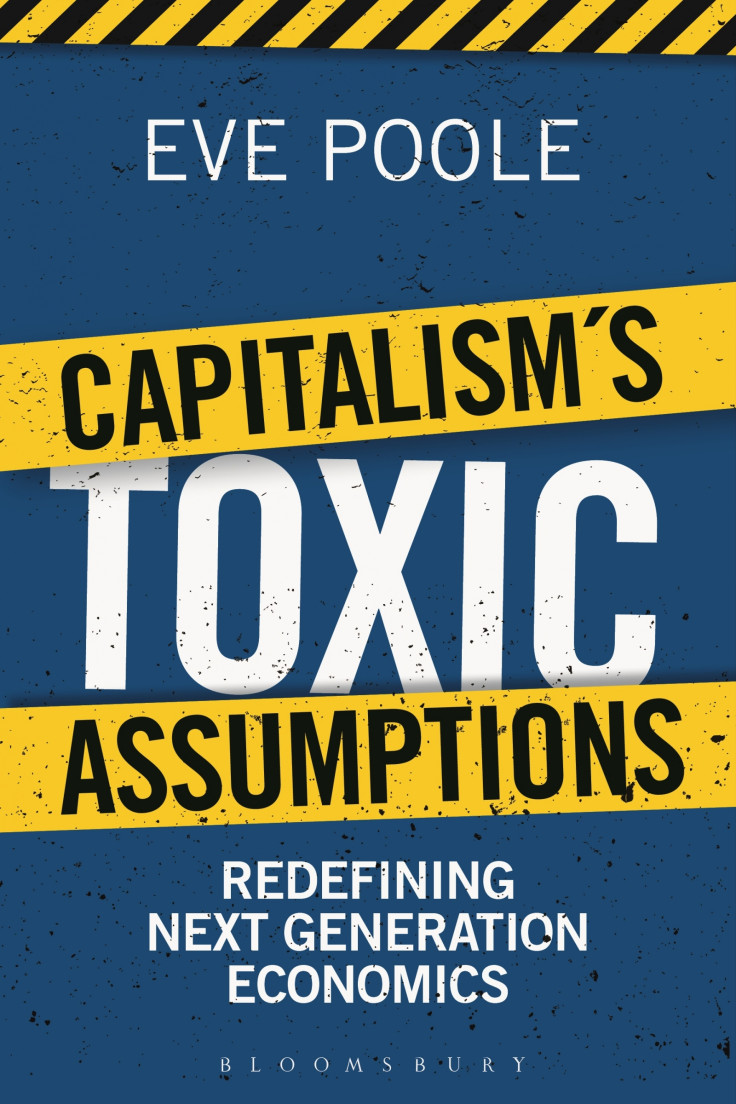International Women's Day: How testosterone-fuelled men corrupt competition and hurt company profits
This is the first in a series of three exclusive extracts from the book Capitalism's Toxic Assumptions: Redefining Next Generation Economics by Eve Poole, published by Bloomsbury Publishing and Ashridge Business School on March 26. To order a copy at 20% off, please visit the Bloomsbury website or call 01256 302 699 and quote the reference 'GLR DK8 ' when you place your order. Offer ends April 5.

Have you ever sold anything on eBay? eBay is a great way to explain the market because it's such a pure version of the system.
I want to pay for a holiday, so I sell off an heirloom. Strangers compete with each other to buy it, checking out the going price by looking at similar transactions. We don't know each other, but eBay's feedback mechanism acts as a guarantee, because no one wants to deal with someone dodgy, so everyone tries hard to keep their ratings up.
The system means that I get my holiday cash, and the winner gets my heirloom. We're each acting selfishly in our own interests, but somehow everyone doing just that seems to work out over the longer term. If items don't appear on eBay very often, they spark off a bidding war and attract high prices. If they're everyday items, they tend to follow a predictable pattern, with prices staying fairly stable over time.
The whole system assumes competition, on the grounds that it makes people try harder. This improves the quality of the market over time, as organisations vie with each other for market share, and people compete for jobs. Apple stays in the game by designing better products than its rivals. Supermarkets advertise price drops. And ambitious executives get an MBA to give them an edge in the job market. This is competition at work, improving the marketplace.
But thanks to the Oscar-winning film A Beautiful Mind, everyone now knows about John Nash's equilibrium theory, and that it is actually co-operation as a primary strategy that yields better outcomes over time. While winning at all costs is necessary for survival in war, in business, companies want longer term customer and supplier relationships.

Those who treat transactions as battles to be won or lost sooner or later come a cropper, as their brand tarnishes and the market votes them out. On the other hand, co-operation and the sharing of information increases the size of the pie, instead of restricting the debate to arguments about how best to cut it up. But why, when the maths is widely accepted and has also been popularised through a number of well-received books, is co-operation not a more central part of the DNA of business? The reason for this is based on gender.
The sociological observation that men are keen on sport has spawned endless caricatures. While this is endearing, it has a dark side. The police report a sharp increase in domestic violence when favourite teams lose key games. This phenomenon has everything to do with the reason that competition is still the default in market economics.
Markets are invariably run by men, and men are biologically conditioned to respond to perceived threats by competing to win. While this was biologically necessary when we were pre-historic, it is only sometimes necessary in the modern world, and less necessary in the modern business context than could be assumed from its ubiquity as an axiom.
Markets are invariably run by men, and men are biologically conditioned to respond to perceived threats by competing to win.
The biology is simple and widely understood. In dangerous situations, the body responds in 'fight-or-flight' mode, producing adrenaline to boost performance. Among other things, adrenaline raises the heart rate to increase blood flow, dilating the blood vessels and air passages to increase the likelihood of survival either through physically combatting the threat or fleeing from it.
While this has often been explained as a binary choice, the body in fact defaults to 'fight' and resorts to 'flight' only if the person involved does not feel adequately resourced to prevail. Indeed, this is why the primary stress reaction is so alluring, because the 'fight' mode is characterised by a temporary enhancement of both physical and neuro-biological functioning to give us the best possible chance of surviving. It is only when it becomes apparent that all is lost that the body prepares for flight, and brain functioning reduces to focus on physical exit.
Many performers both in sports and the arts rely on this enhancement, and the low brought on by the adrenal hangover is notorious. This idea that a certain amount of stress enhances performance has given rise to the terminology 'eustress' or good stress, as opposed to 'distress' or bad stress. This state also gets called the 'stretch zone', and current theory suggests that it can be extended by increasing the range of situations in which a person feels either physically or psychologically resourced to prevail.

The downside of being in an aroused state is that the body thinks it is straining to survive, and under pressure we may perceive threats to survival that actually do not exist. As the body moves into flight mode, cognitive functioning shuts down, and we over estimate our abilities to overcome a threat just when our ability to make this judgement becomes seriously impaired.
What is less well understood is that this response is not a universal one. It is a male one. Before 1995, only 17% of test subjects in this field were women, and the 'fight-or-flight' theory was originally based on studies on male rats. When these studies were carried out on humans, results from female subjects were discounted because variations in hormone levels caused by female reproductive cycles meant that their data was often confusing or difficult to interpret. But Shelley E. Taylor and her colleagues at the University of California became curious about why the data from females didn't fit, and wondered if it was the theory that was at fault, rather than the test subjects.
When the tests were re run, it became apparent that the 'fight-or-flight' theory was predicated on the existence of testosterone. When women were involved, the stress response triggered the release of oxytocin instead, the 'love hormone' associated with peer bonding, affiliation and motherhood. Their paper, published in the Psychological Review in 2000, contrasted the male 'fight-or-flight' response with the female response which they dubbed 'tend-and-befriend'.
...men are conditioned to react to stressful situations by reading them as zero-sum games and meeting them head-on as a matter of life and death
Maybe in a male-dominated world it is not surprising that the paper has received scant attention (except in the women's magazine Marie Claire), and that funding to pursue these experiments has been slow to materialise. Its findings suggest that men are conditioned to react to stressful situations by reading them as zero-sum games and meeting them head-on as a matter of life and death. This is usually explained as a difference in role from our cave-dwelling days, when the men were responsible for hunting and defence and the women for tending the fires and the children. In these conditions, 'fight-or-flight' would give cavemen an evolutionary edge.
Similarly, a stress response in women that was more about 'tend-and-befriend' would enhance their ability to carry out their role under pressure. A protective response towards offspring, and the seeking out of social contact for mutual support and protection, would help to keep the fires and the children safe while the men scared off the sabre-toothed tigers. Today, this response is pilloried in adverts about women gossiping on the phone, which only shows how intuitively we have understood this difference all along, even if we have not always understood its social function.
Of course, we are not prisoners of our biology, and many women who have spent their careers working alongside stressed men may find that over time they have developed a Pavlovian 'fight-or-flight' response, and can no longer remember experiencing 'tend-and-befriend' instead. But it is interesting to wonder whether, given free rein, a 'tend-and-befriend' response in the boardroom would not be more useful than a 'fight-or-flight' one, given theories about the usefulness of co-operation.

As an example, the particular trigger for the recent credit crunch was banks refusing to lend to each other. We have since learned that this was made all the more complex because the banks were manipulating the Libor inter-bank lending rate anyway. The resulting impasse locked the system, triggering the liquidity crisis that toppled so many institutions. Given statistics on gender balance in the boardroom, most of the senior people involved in the situation were men, likely trying to make good decisions in enormously pressured conditions. And it is highly probable that the long working hours they were putting in over that period, and the effect this had on the quality of their sleep, let alone the impact of the crisis on diet and exercise, would have primed their body chemistry for 'fight-or-flight' no matter how rational they thought they were being about it.
It would have involved quite staggering amounts of self-control to over-ride such strong biological instincts to protect their own bank at all costs, in what must have seemed a very extreme zero-sum game environment, particularly when formal economic theory about competition would provide them with a rational defence for self-interested action.
Perhaps a group of women would have acted in the same way. But suppose 'tend-and-befriend' had kicked in instead. The instinct to pick up the phone to discuss it with the others might just have offered the banking community an opportunity to share information and to work together to keep the system functioning, given that a collapse in confidence in banking affects the system as a whole.
This hypothesis would be supported by the work of Cambridge's John Coates, himself an ex-trader, whose research shows the magnifying effects of testosterone and cortisol on male trader behaviour, and that, under stress, the weighting of probabilities becomes more distorted among men relative to women. This argues for the involvement of more women, as well as older people whose testosterone levels have diminished, in order to smooth the risk profile of trading, particularly under stress.
More generally, the 2011 Davies Report on women on boards included the finding that companies with more women on their boards significantly outperform their rivals, with a 42% higher return in sales, 66% higher return on invested capital and 53% higher return on equity. The 2010 data from McKinsey on top-quartile companies also shows that the return on investment of those with the highest proportion of females on their executive committees exceeds by 41% the ROI of those with wholly male executive committees. Similarly, the operating results of those with mixed-gender boards exceed their male counterparts by 56%.
Additionally, the economist Mikko Manner has shown that having a female chief executive is positively correlated with superior corporate social performance, and a recent study for a UK asset management firm, reported in New Model Adviser in 2011, found that FTSE-listed companies with at least 20% female representation at board-level achieved significantly higher operational and share price performance, both in the short and the medium term, than those with lower percentages of female representation.
If companies just promote more women, over time the balance between competition and co-operation will adjust.
One caveat: research always shows that heterogeneous groups make better decisions than homogeneous ones, and it may be that women are merely used in these studies as a cypher for 'diversity', given how unrepresentative so many boards still are. But the argument from stress research would suggest that women have a specific role to play in difficult times, in keeping lines of communication open when the instinct might otherwise be to shut them down. And if we are to believe what maths tells us about more information generating better outcomes, this could only improve corporate results.
In the Judaeo-Christian tradition, there is a story about Naaman, the commander of the armies of Syria. He has leprosy, and his boss the king hears that there is a prophet in Israel who might be able to cure him. Laden with gold and silver, Naaman sets out, and arrives with his horses and chariots at the house of Elisha. Rather than coming out to greet the great man, Elisha sends him a messenger, telling him that if he goes and washes in the Jordan seven times, he will be cured. But Naaman, expecting drama, is so angry that he is being fobbed off with something so prosaic that he leaves. Eventually, he is persuaded to give the Jordan a go, and is cured.
I think the toxic assumption of competition is like this story. It could be fixed with a huge drama involving massive legal and cultural change. Or it could be cured very simply. If companies just promote more women, over time the balance between competition and co-operation will adjust. But, as Naaman found, this does require a massive leap of faith.
© Copyright IBTimes 2025. All rights reserved.






















